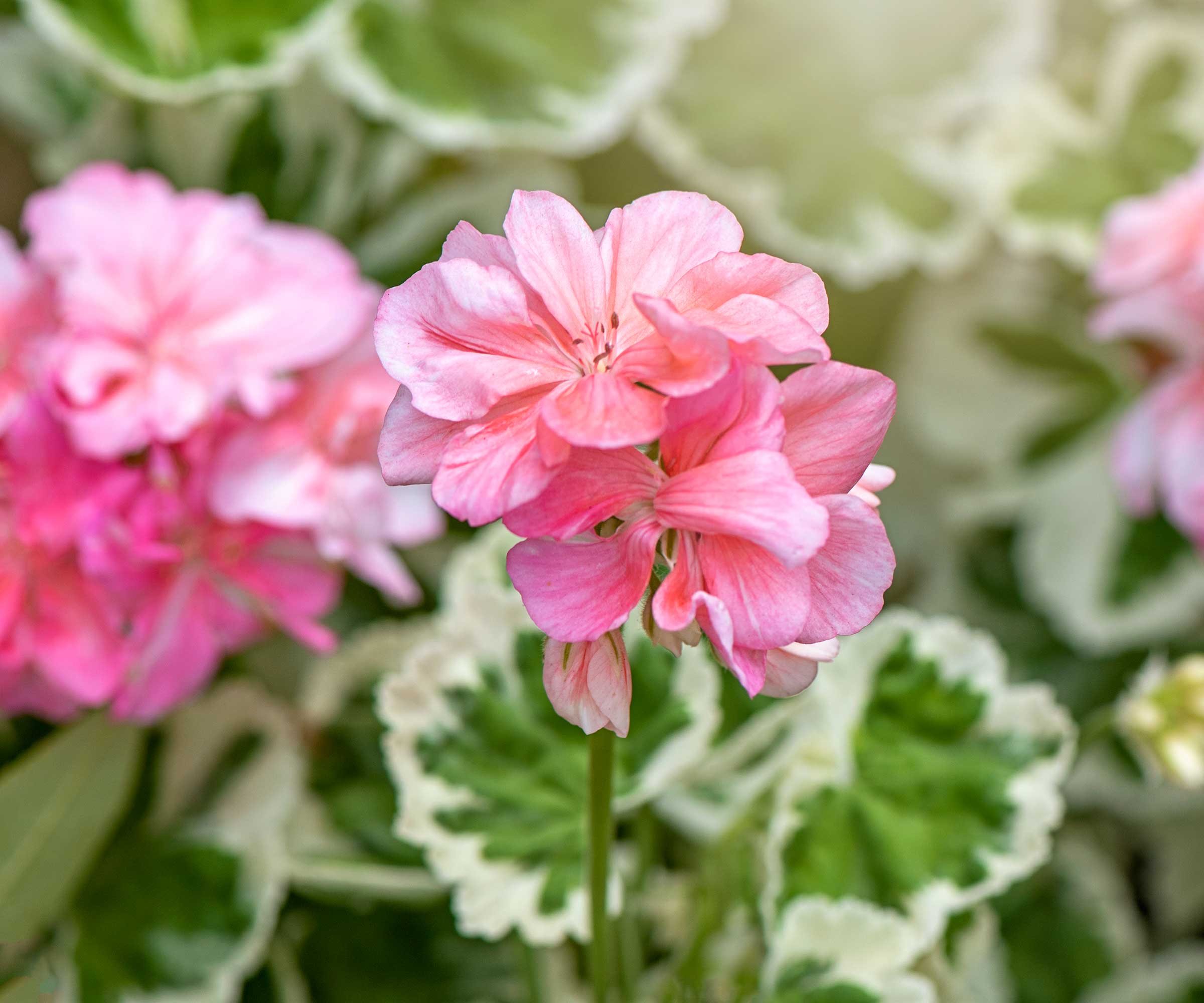
Q: I have bought a few tender geraniums in pots, which I plan to keep on the patio during summer. Is it a good idea to feed them, and if so, how and when should I do it?
A: Tender geraniums, also known as pelargoniums, are a fabulous choice for container gardens. And fertilizing them can promote abundant flowering and healthy foliage, as Autumn Janus from Perfect Plants Nursery points out. According to gardening expert Tony O'Neil, fertilizers also provide essential nutrients that support the resilience of the plants, helping them withstand pests and diseases.
However, it's important to feed your plants in the right way, as well as at the right time, for the best results. This guide explains how to do it, so you can enjoy these blooming beauties at their best.

Expert advice on how to fertilize geraniums
Whether you're a big fan of the Pelargonsjuka trend or just have one or two of these cheery plants, these top tips will help them thrive.
Fertilizing geraniums in pots

Anna Ohler, the owner of Bright Lane Gardens nursery, recommends feeding pelargoniums in pots every two to four weeks during the growing season (spring and summer). Reduce feeding to once a month in the fall, and stop during the winter, she adds.
Slow-release fertilizers should be applied at the beginning of the growing season, following the package recommendations for the amount and frequency, she adds.
'Always apply fertilizer according to the package instructions,' she continues. If using a liquid fertilizer, she says to water the plants with it, ensuring even distribution around the base. 'Avoid getting fertilizer on the foliage to prevent burning.'
If you're using a granular feed, Anna recommends evenly spreading it over the surface of the soil, avoiding the plant stem and leaves.
Fertilizing geraniums in borders

Pelargoniums also make good summer plants for flowerbeds. Those planted in this way will benefit from a feed, too.
Autumn suggests fertilizing them every four to six weeks during the growing season. 'Same as the potted plants, I would recommend focusing the fertilizer at the base of the plants, near their roots, avoiding pouring the fertilizer on the leaves or flowers,' she adds.
Like with potted plants, slow-release granular fertilizers should be applied at the beginning of the growing season, notes Anna. 'Follow package instructions for the appropriate amount based on the size and number of plants.'
FAQs
When is the best time to fertilize geraniums?
Remember, you won't need to apply fertilizer while overwintering geraniums. Autumn says they can be fertilized up until the first frost of fall.
'It is best to apply liquid fertilizer during your regular scheduled watering, which should be in the morning or evening,' she adds.
What fertilizer should you use to feed geraniums?
Tony O'Neil recommends using a balanced, water-soluble fertilizer with an NPK ratio of 10-10-10 or 20-20-20 for general feeding, but then switching to a fertilizer with a higher phosphorus content, like 15-30-15, during the flowering season.
We like the look of the Miracle-Gro Bloom Booster Flower Food, available from Amazon for the latter, which has lots of great reviews. For a balanced one, consider the popular Jack's Classic 20-20-20 all-purpose, water-soluble fertilizer, also from Amazon.
If you prefer using an organic fertilizer, Anna says compost tea or blood meal are both commonly used with geraniums.
How can you tell if you've overfed your geraniums?
Being overzealous with feeding can do geraniums more harm than good. Anna says to watch for signs such as yellowing leaves, burnt leaf edges, or reduced flowering, which can indicate over-fertilization.
If your pelargonium is in a pot and is showing the signs above, she recommends flushing the soil with water, until it starts to flow from the bottom of the container. This will help to remove excess nutrients. Remember to adjust your fertilization schedule going forward.
The soil around over-fertilized plants in flowerbeds can also be 'flushed', with the help of a garden hose.
Feeding gives many types of plants a boost, both indoors and out. Just be sure to steer clear of the common fertilizing mistakes.







